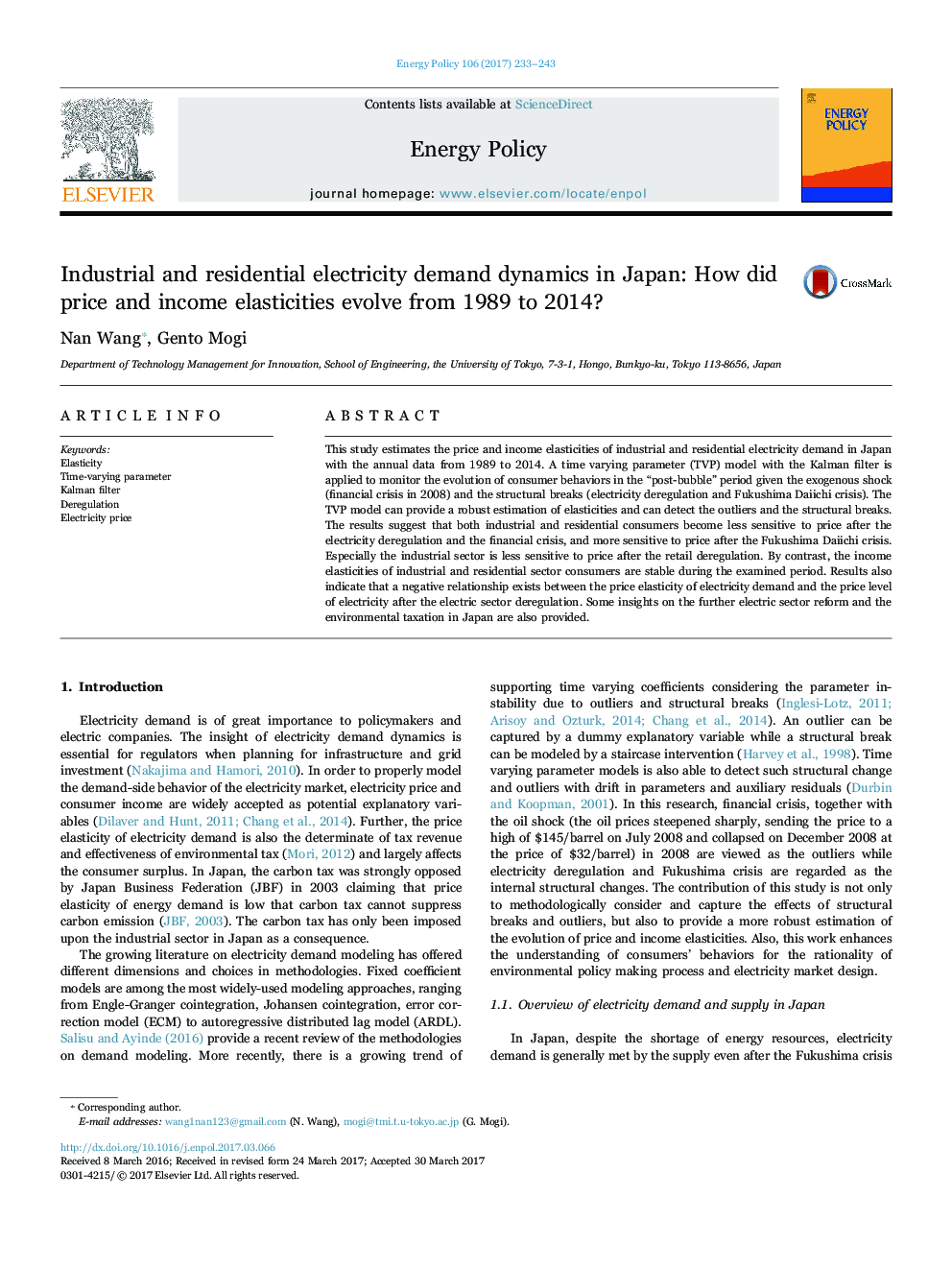| Article ID | Journal | Published Year | Pages | File Type |
|---|---|---|---|---|
| 5105777 | Energy Policy | 2017 | 11 Pages |
Abstract
This study estimates the price and income elasticities of industrial and residential electricity demand in Japan with the annual data from 1989 to 2014. A time varying parameter (TVP) model with the Kalman filter is applied to monitor the evolution of consumer behaviors in the “post-bubble” period given the exogenous shock (financial crisis in 2008) and the structural breaks (electricity deregulation and Fukushima Daiichi crisis). The TVP model can provide a robust estimation of elasticities and can detect the outliers and the structural breaks. The results suggest that both industrial and residential consumers become less sensitive to price after the electricity deregulation and the financial crisis, and more sensitive to price after the Fukushima Daiichi crisis. Especially the industrial sector is less sensitive to price after the retail deregulation. By contrast, the income elasticities of industrial and residential sector consumers are stable during the examined period. Results also indicate that a negative relationship exists between the price elasticity of electricity demand and the price level of electricity after the electric sector deregulation. Some insights on the further electric sector reform and the environmental taxation in Japan are also provided.
Related Topics
Physical Sciences and Engineering
Energy
Energy Engineering and Power Technology
Authors
Nan Wang, Gento Mogi,
